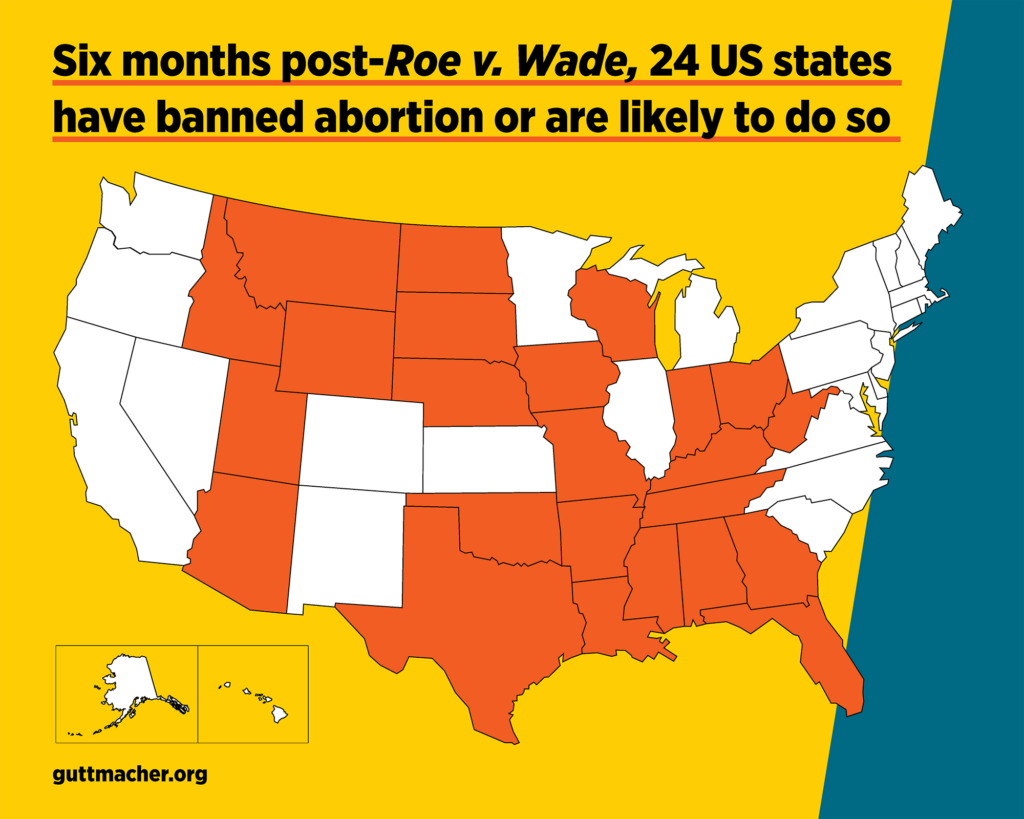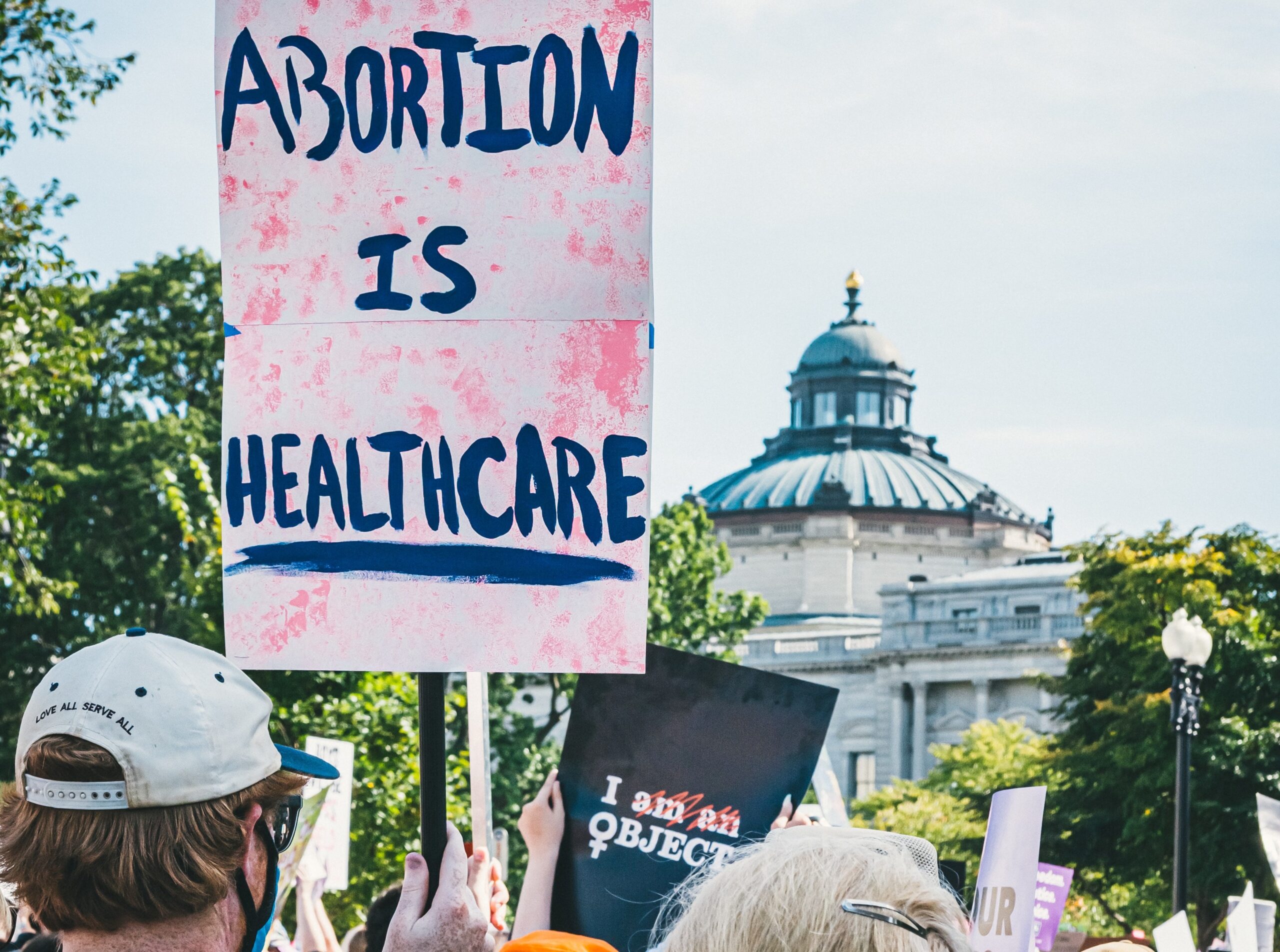
Six months on from the overturning of Roe v. Wade
Yesterday would have marked the 50th anniversary of the landmark Roe v. Wade decision, had it not been overturned in June last year. Digital and Communications Manager, Ben Stallworthy, looks at the fallout and how things look six months later.
On 22 January 1973, the US Supreme Court ruled that the right to an abortion was protected by the US constitution, meaning individual states no longer had the right to ban abortions. It was momentous, improving the lives of millions overnight.
As we reported back in June 2022, this decision was overturned, landing a devastating blow to women’s rights in the US and beyond. In the days after the decision, it was widely assumed that 26 states would introduce immediate abortion bans. But now, six months and a midterm election later, what’s the current lay of the land?
“The Roe v. Wade Supreme Court ruling of 1973 established that the right to an abortion was protected by the US Constitution. The current court has ruled that no such protection exists and it is therefore for individual states to determine their policies.”
Where are we now?
Of the 26 states, 13 already had pre-existing so-called “trigger laws” in place, or laws that predated Roe, essentially taking effect the minute Roe no longer applied. At the time of writing, abortion is either completely or partially banned in 24 states (you can see a full list of those states and the type of ban in place in each at the Guttmacher Institute here).

Of the other two, Michigan voted overwhelmingly to amend the state constitution and protect abortion rights back in November, and the South Carolina Supreme Court removed a ban this month, although that is unlikely to be the end of it. Despite these limited successes, it’s clear that the situation is desperate, with millions of people either struggling or unable to access the healthcare they need.
People making themselves heard
The issue of abortion rights became one of the key platforms in November’s US midterm elections. Not only was it a central policy for many candidates, but various states also had abortion-related questions on the ballot.
The majority of Americans support the right to abortion – decades of polling have made this clear, and this was proved by the recent midterm elections. Interviews and exit polls show abortion was the top issue for many voters.
BMJ
Voters in Kansas rejected a bid to remove abortion protections from their state. Californians voted to amend the state constitution to protect reproductive freedom, as well as accepting a proposal to protect the fundamental right to choose to get an abortion or use contraceptives. Voters also made their feelings clear about various abortion-related bills in Kentucky, Montana and, as previously mentioned, Michigan.
Long travel and dangerous practice
But what’s the upshot for those unable to access legal and safe abortions in their home state? The sad fact is that many people are having to resort to travelling across state lines to access abortion care, something that can be arduous, stressful, and very expensive.
“When people do not have access to abortion care in their state, they are forced to make the difficult decision to travel long distances for care, self-manage an abortion or carry an unwanted pregnancy to term.”
Guttmacher Institute
But in a certain way, those that are in a position to make that decision are the lucky ones. Travelling long distances to access abortion care is not always an option, for various reasons, and the greatest impact has been felt by those communities already marginalised and repressed, with low-income, black, latinx and indigenous people bearing the brunt.

The US and beyond
It is important to remember that nearly half of all pregnancies worldwide are unintended, and over 60% of these unintended pregnancies may end in abortion. Almost half (45%) of abortions are unsafe and unsafe abortions are the leading cause of maternal death worldwide.
It’s hard to disagree that last year’s Roe v. Wade decision won’t have emboldened pro-natalists around the world, and we’ve seen developments which suggest just that in various countries over the past six months. You can track these developments on our Gilead watch page.
If you would like to learn more or take action, please consider following one of the organisations below. They work tirelessly to educate, inform and improve the lives of those who have had their rights stripped away.
TAKE ACTION NOW
Keep up to date with developments and actions you can take by following organisations such as The Guttmacher Institute, Planned Parenthood Action, IPAS and the Center for Reproductive Rights, who are all active on this issue.



